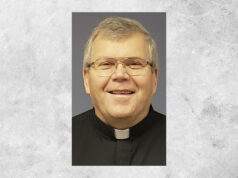
An anniversary of 150 years calls for a huge celebration and that is exactly what the Diocese of Wilmington has achieved in the first 11 months of its sesquicentennial.
Examining the roots of their faith will help Catholics celebrate the legacy of the diocese in a Feb. 24 archives exhibit containing religious artifacts dating back to the 1600s.
The Diocese of Wilmington was formed in 1868. It is home to more than 50 parishes and 18 missions with families across Delaware and the Eastern Shore of Maryland. Students from 36 Catholic schools also make up much of the community’s population. Catholics inhabited the Delmarva peninsula before the formation of the diocese.
The legacy of those Catholic families and churches still remains, according to Susan Kirk-Ryan, who works as archivist for the diocese. Her latest effort to demonstrate the history of the diocese happens at an archives exhibit Feb. 24 from 12-3:00 pm. The event will be at the Family Center at St. Joseph’s on the Brandywine in Greenville.
The archives exhibit will display artifacts gathered from across the diocese.
“One of the things that has been very meaningful for me has been viewing my own Catholic heritage and that of those who came before me,” Kirk-Ryan said. She explained that one of the benefits of the exhibit is that it will allow Catholics to see themselves within the context of their faith.
The archives exhibit will promote a person’s sense of gratitude and appreciation for their religion, Kirk-Ryan said, and will show the birth, progression and profound impact the diocese has had on the entire Catholic community.
Among important documents to be shown at the exhibit include the deed to St. Joseph’s on the Brandywine and the charter of the Diocese of Wilmington.
“Probably the earliest artifact that we have is a chalice that was used in Cordova Md., that was made as early as 1640,” Kirk-Ryan said. The Sayer chalice from Maryland will be accompanied by several treasured items including rings, miters, and croziers worn and used by bishops throughout the years.
The exhibit is open to the public of all ages.
Historical artifacts can be interesting to look at, but Kirk-Ryan believes this exhibit will touch people on a more profound level.
“I think it’ll deepen the appreciation of the faith that people are born into and the faith that they hopefully continue to find,” Kirk-Ryan said.








